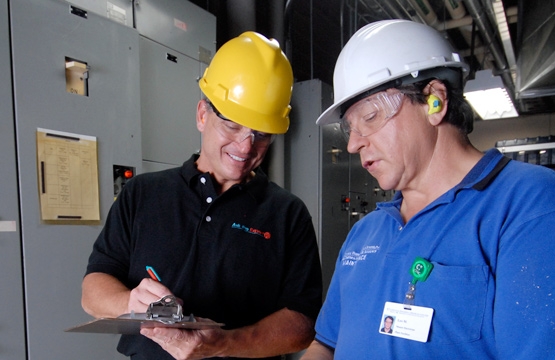

Old School VS New - Annotations and Inspection Details
As technology changes it’s important to keep an open mind and recognize that things change, processes change and that there’s benefit to exploring new approaches to just about anything. Let me say that I can be set in my ways and in fact I take pride in being “old fashioned” about some things.
One area where I have been resistant to change is in annotation of inspection data. I still carry a clipboard and pad to write down information on equipment I inspect. There’s not a great reason for continuation of old school methods, except for habit.
I often type emails from my smart device. It’s almost as fast as using my laptop and I’ve gotten so accustomed to small operating space in regard to electronic devices that I don’t even use a mouse with my laptop, I use the touchpad. I could also use my imager’s onboard annotation feature, if I would.
Most of the newer imagers on the market have the capability for onboard annotations. One can either utilize a voice annotation capability or add them in writing. When selecting the voice annotation, there is typically the option to utilize a Bluetooth device, such as a head set or microphone, or the onboard microphone on the imager itself. Before relying solely on either of these, it’s advisable to test them in the field to assess the sound quality. Or the choice could be made to add annotations utilizing a keyboard that opens on the imager screen allowing for input of whatever information you’d like to record. There’s typically a character limit, but generally it’s high enough it is rarely exceeded.
Just as in any other set of options, there is a positive and a negative side to each of these. When I use the clipboard method, I have the information available to me even after I enter it into a report. If there’s a question down the road, I can consult my notepad. Of course, that begs the question; how long do I hold on to that data? If the data is correctly transposed, the final report can be used for final reference. The largest downside to utilizing onboard annotation is the file size. For example, an image file can dramatically increase file storage size with an accompanying voice annotation. Of course, data storage isn’t the issue it used to be, so that might not be a concern.
Another point to consider for time savings is pre-populated annotations. Our inspections group uses a reporting template where we insert image files and populate tabulated data with specifics for each report entry. We have a supplemental document that has the various possible annotations in blocks that our analysts can copy and paste into the report template. This can be an enormous time saver.
In conclusion, keep an open mind to technological changes that can simplify repetitive tasks. Resist the urge to dismiss new processes out of hand simply because they’re new and different than what has historically been used. No matter the method chosen, Think Thermally!®